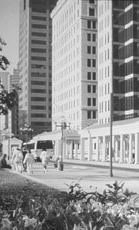| A CHECKLIST FOR CHANGE | |||||
|
GROWING INWARD REBUILDING THE CENTER CITY |
|
     
|
|
|||||||||||
A recent study shows there is real demand for downtown residential opportunities in Columbus, for apartments, condominiums and townhouses, for renters and for owner-occupants. The key will be to identify and deal with obstacles to development of residential properties to serve that demand, and to induce the private sector to undertake the needed projects. Land or building acquisition problems, code and zoning problems, financing problems, parking problems and others can be disincentives. At the same time, downtown residential projects are being undertaken, sometimes only one or two units at a time, sometimes more.
|
||||||||||||
| Introduction | Conclusion
| Speakers
| Sponsors Vision | Downtown | Policy | Transportation | Housing | Education Make Downtown Convenient, Safe and Livable |


